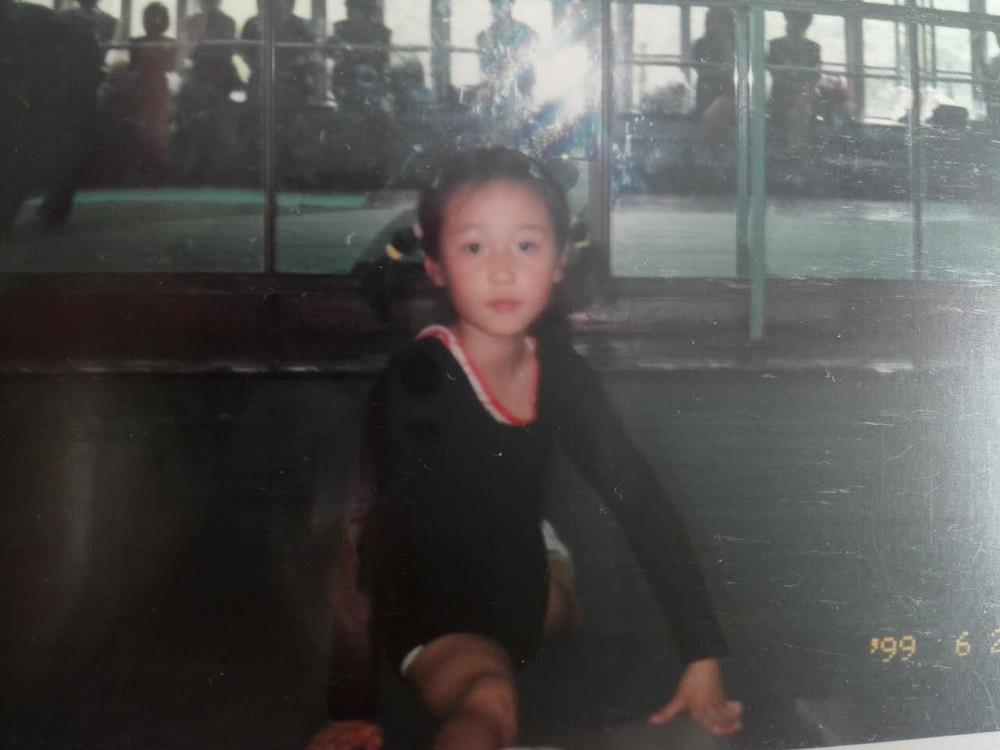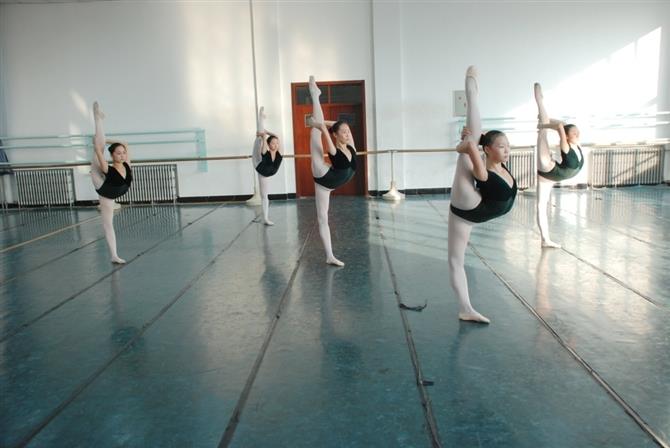NDEO’s Guest Blog Series features posts written by our members about their experiences in the fields of dance and dance education. We continue this series with a contribution by Yi An, PhD Student at the University of Hawaii at Mānoa. Guest posts reflect the experiences, opinions, and viewpoints of the author and are printed here with their permission. NDEO does not endorse any business, product, or service mentioned in guest blog posts. If you are interested in learning more about the guest blogger program or submitting an article for consideration, please visit this link.
Dancing In-between China and the United States
By Yi An, PhD Student, University of Hawaii at Mānoa
My name is Yi, An; I am from China. Dance has played different roles and witnessed my metamorphosis in every stage of life. I have been studying dance for about 23 years; honestly, I never thought I would become a professional dancer and even dance in the United States, after I received my BFA degree majoring in Han and Tang Chinese classical dance from China's top one dance school Beijing Dance Academy.

There are two childhood stories related to my dance experience in China, which I still remember now. First, I wrote five Chinese characters with a pencil at the bottom of the dinner table when I finished my lunch in my mom's home: “我是舞蹈家." In English, this means "I am a professional dancer." Second, when I lived in my grandmother's house, my mother enrolled me in a dance course every Monday, Wednesday, and Friday. I sculpted three Chinese characters on the wall next to my bed: "一“,”二“,”三 “ which translating to English is "one", "two," and "three," representing my weekly dance classes.
Passing through a series of competitive selections, I began my full-time professional dance training in Beijing at the age of 12. The actual reason I attended the professional dance school was simply because of my curiosity of the new environment. Five years of normative and systematic studying not only provided me with comprehensive knowledge in both Chinese classical dance and folk dance, but it also shaped me to be independent, self-disciplined, and determined.
In 2011, I received an offer to pursue a BFA from the Beijing Dance Academy by achieving eighth place nationally in my third-year audition. Although I had two years of unsuccessful annual auditions for the Beijing Dance Academy before this, it did not stop my dream to dance, and I consistently maintained daily training and prepared for the academic exam by myself throughout the entire three years before I was admitted. This offer was life-changing for my family and me, and I am thankful for their endless support.

Photo by Wu Lei
Coming to the United States in 2015 to pursue my MFA degree at the University of North Carolina at Greensboro was the most significant and wisest decision of my life up to that point. This experience was precious; it shifted my perspective from my prior ten years of dance training and has motivated me to undertake further study through a Ph.D. program. As a traditional Chinese dance student, I always "obeyed" my dance teachers and was willing, waiting, and wanting them to give me hands-on "corrections." However, things were different in the United States. The teachers even asked my permission for hands-on correction by asking, “Would you mind if I give you a touch?"
American teachers asked me about my dance process and motivation of movements, which I never thought of or heard about dance class in China. There are two words that American teachers ask frequently: "Why?" and "How?" The "why" and "how" questions drive me to perform independent and critical thinking instead of merely moving my body in the class. In so doing, I am no longer a "follower" who stands in the middle of the class, ready to receive the signals from the teachers. I am no longer a "loner” who used to work hard by herself; but now I share and exchange ideas with peers. I am no longer a "loser" who never satisfied the teachers' expectations, but I am sailing my own boat with my speed and destination.
The experience here totally shifted my teaching philosophy and revised my value in dance education. I used to believe the definition of a successful dance teacher is to transfer all his or her lifelong dance techniques and movement qualities into the students' bodies, and push students to achieve what teachers could not achieve when they were young. Now, I see myself as a human being, an independent woman, and a healthy dancer after a couple of years of study in the United States. I am thankful for all of my American dance teachers' patience, which allows me to realize and smell the life-long term's pathway indeed. I am thankful for their trust and "hands-off" teaching methods; because of this, I can see my entire shadow in the learning desert. Encouragement and empathy were delivered in every single moment during classes, which created a safe place for me to make mistakes and rebuild my self-confidence in both my academic and life journey. I remember how an American teacher said during an African dance class, “There is no right or wrong because this is a classroom in which we are all practicing together."
As a dance educator, I believe the best way to facilitate dance classes is to “dance” with your students, listen to the students' own "music,” watch individual students' own "story," sense the classroom "temperature," and bring all your weakness and humanness to your students. Twenty years later, from the childhood stories shared at the beginning of the blog, I also want to share two stories that shocked me at that time in graduate school here. First, a professor shared a University job opportunity email with all class students, including ME. Second, a professor apologized in front of the class to my classmate after a tense conversation that erupted from a misunderstanding. This conversation would never happen in China because teachers are always right in my country. I see the equality between students and teachers in dance classes, rehearsals, lecture classes, and daily conversations in the United States.
 Yi An is an international dancer, educator, and emerging scholar from Dalian city, China. She began her five years’ full-time professional dance training at the age of 12 in Beijing Opera Art College, where she had trained intensively in heterogeneous dance genres including Chinese Classical Dance, Folk Dance, Tibet Dance, Dai Dance, Mongolian Dance, Uyghur Dance. In 2015, she graduated from Beijing Dance Academy with a BFA degree majoring in Han and Tang Chinese Classical Dance. In 2019, Yi received an MFA in Choreography from the University of North Carolina, Greensboro. During her study in the United States, she has actively engaged in the Chinese community and teaching for various ethnic-based dances by syncretizing her intercultural dance experience with her unique global perspectives. She received numerous scholarships from both China and the United States; Kristina Larson Choreography Award, John Young Art Scholarship, Dai Ho Chun Fund for Graduate Fellowships, and departmental Merit scholarships. Currently, she is pursuing her doctoral degree in Performance studies at the Department of Theatre and Dance at the University of Hawai'i at Mānoa. Her research interests are focused on performance studies, dance education, cross-cultural studies, Chinese dance studies, and multicultural pedagogy. Headshot by Rui Wang
Yi An is an international dancer, educator, and emerging scholar from Dalian city, China. She began her five years’ full-time professional dance training at the age of 12 in Beijing Opera Art College, where she had trained intensively in heterogeneous dance genres including Chinese Classical Dance, Folk Dance, Tibet Dance, Dai Dance, Mongolian Dance, Uyghur Dance. In 2015, she graduated from Beijing Dance Academy with a BFA degree majoring in Han and Tang Chinese Classical Dance. In 2019, Yi received an MFA in Choreography from the University of North Carolina, Greensboro. During her study in the United States, she has actively engaged in the Chinese community and teaching for various ethnic-based dances by syncretizing her intercultural dance experience with her unique global perspectives. She received numerous scholarships from both China and the United States; Kristina Larson Choreography Award, John Young Art Scholarship, Dai Ho Chun Fund for Graduate Fellowships, and departmental Merit scholarships. Currently, she is pursuing her doctoral degree in Performance studies at the Department of Theatre and Dance at the University of Hawai'i at Mānoa. Her research interests are focused on performance studies, dance education, cross-cultural studies, Chinese dance studies, and multicultural pedagogy. Headshot by Rui Wang